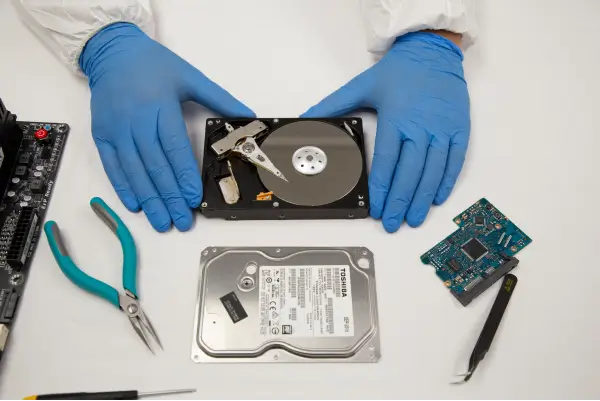With advances in technology, digital evidence is becoming more prominent in the legal realm. Law firms, defendants, and court systems alike rely on digital evidence to prove a case. The main priority regarding digital evidence is security. If even one piece of information is tampered with or the chain of custody is not documented correctly, the whole case could fall apart.
What Is Digital Evidence?
According to the National Institute of Justice, digital evidence is information that is stored or transmitted in a binary form that may be relied on in court. This evidence can be found on computers, mobile devices, and DVRs among others. While many times this evidence is used in instances of e-crime like fraud or pornography, it is now used for any sort of crime. People have captured videos on their phones, police have body cam videos that capture their work, and email chains have been used to show a person’s intent to commit a crime. When a case involving digital evidence arises, the first step is to preserve the data in a secure and law-abiding way.
The Data Preservation Process
To collect data from a media device, you need a digital forensics team to safely extract the evidence. The team at SecureForensics begins by identifying factors such as the times and dates that an incident occurred, finding out who was involved, the machines that were affected, and what actions have been taken since the initial discovery.
They then identify the potential source of analysis and collect it for forensic experts. One of the important steps in the process is then to image the storage media to make a copy. This ensures the evidence isn’t altered in any way and aids in the chain of custody. Our forensic experts then search for copies of pertinent information and provide a report for the client.
Current Storage Systems and Lawful Requirements
In the instance of civil trials, both parties go through a process called “discovery” in which they share with the court and each other the evidence they plan to use to prove their case. If it goes to trial, the evidence is presented as exhibits to the court. The clerk of courts then retains that copy for future review. This evidence is stored on the media format in which it was originally presented. This includes CDs, DVDs, flash drives, external hard disks, and more. Any hard copies of evidence are scanned into the court’s computer system.
Electronic evidence is covered under the Federal Rules of Evidence, rule 902. This rule accepts evidence that is “self-authenticating” and requires no outside evidence of authenticity in order to be submitted. Amendment 13 to this rule allows records generated by an electronic process or system with an accurate result to be submitted as self-authenticating. Amendment 14 allows for data copied from an electronic device, storage medium, or file to be considered self-authenticating evidence if it’s authenticated by digital identification.
SecureDrives Keep Your Evidence Safe and Court-Admissible
SecureDrives are the ideal self-authenticating storage solution. The BT drives have an admin log that lists who accessed the drive, at what time, and in what location. This ensures that the evidence is authentic because the chain of custody is clear. The chain of custody is a way for the legal system to track the control, transfer, and analysis of any evidence that will be used in a court of law. By using the admin log on the drives, all of this information is easily documented in the mobile app, keeping your information court-admissible.
In instances where law firms have lawyers working collaboratively on a large case, any evidence that they receive from their defendants will remain safe. Court regulations are in place regarding the defendant’s evidence and how it is handled. By using SecureDrive BT, the evidence is only accessible to those who are given permission to access the drive by the admin. Additionally, two lawyers can work on a case in separate locations, with the SecureDrive BT having remote access from anywhere in the world. The geo and time fencing features allow a law professional to access evidence during specific times and only when they are in a certain location such as the courtroom or law office.
In some circumstances, sensitive information must be sent through the U.S. postal service. Some files may be too large to send through email and there is a greater chance that emails may get hacked. The Department of Homeland Security explains that when sending sensitive information, it should be in an opaque envelope and sent as first-class mail. This still does not guarantee safety as the documents are still one rip away from falling into the wrong hands. The SecureDrives keep information off the internet and safe in transit with unlocking procedures requiring a PIN or access through a mobile app.
The SecureDrive KP model also acts as a vital piece of the evidence storage solution after court proceedings have ended. Once a verdict is reached on a case, the evidence from that case becomes public record. The KP model unlocks by entering a unique PIN on the onboard keypad. The clerk of court’s notes on the case could contain this PIN so that the information is kept secure until it is formally requested. This way, the information could not be accessed without the clerk’s express authorization. Additionally, the SecureDrives also have read-only mode, which prevents anyone who is given access to the drive from deleting or tampering with the evidence at hand.













